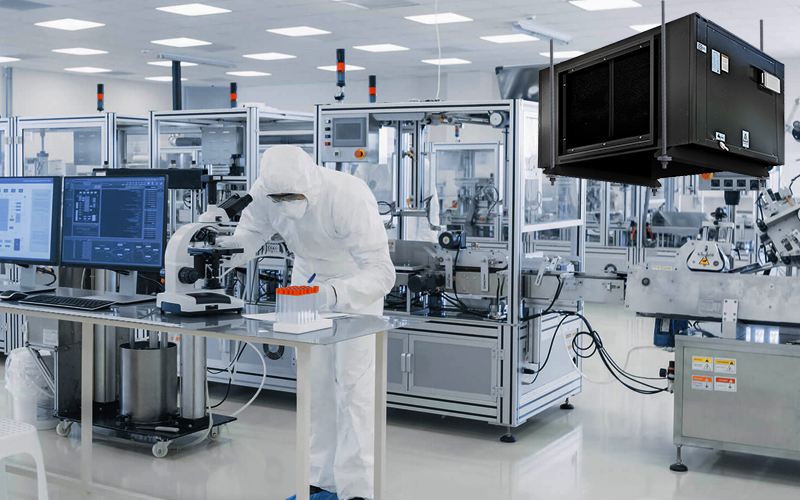What Is a Water Treatment Plant?
A water treatment plant is a facility designed to treat and purify raw water from various sources, making it safe for human consumption, industrial processes, and environmental discharge. The primary goal of water treatment is to remove contaminants, impurities, and pathogens from the water, ensuring that it meets regulatory standards and is suitable for its intended use.
Here are key components and processes typically found in a water treatment plant:
1. Intake:
Raw water is sourced from rivers, lakes, wells, or other natural water bodies and directed to the treatment plant through intake structures.
2. Screening:
Large debris, such as leaves, sticks, and other particles, is removed from the water through screening processes to protect downstream equipment.
3. Coagulation and Flocculation:
Chemicals, often coagulants like aluminum sulfate or ferric chloride, are added to the water to form larger particles by coagulation. Flocculation involves gentle stirring to encourage the particles to clump together, forming floc.
4. Sedimentation:
The water is allowed to sit undisturbed, facilitating the settling of the floc to the bottom of sedimentation basins. This process helps remove suspended solids from the water.
5. Filtration:
The clarified water passes through filters (sand, gravel, or other media) to remove remaining impurities, including smaller particles that may have escaped sedimentation.
6. Disinfection:
To eliminate harmful microorganisms (bacteria, viruses, and parasites), the water is treated with disinfectants such as chlorine, chloramine, or ultraviolet (UV) light.
7. pH Adjustment:
The pH level of the treated water is adjusted to meet regulatory standards and to minimize corrosion in distribution systems.
8. Chemical Stabilization:
Chemicals, such as lime, are added to stabilize the water quality and prevent corrosion or scaling in the distribution system.
9. Storage:
Treated water is often stored in clear wells or reservoirs before distribution to ensure a constant and reliable water supply.
10. Distribution:
Treated water is pumped through a network of pipelines to reach homes, businesses, and industrial facilities. Pressure is maintained in the distribution system to ensure adequate water flow.
11. Residuals Management:
The solid materials separated during the treatment processes, known as residuals or sludge, are often further treated and disposed of in an environmentally responsible manner.
12. Monitoring and Testing:
To eliminate harmful microorganisms (bacteria, viruses, and parasites), the water is treated with disinfectants such as chlorine, chloramine, or ultraviolet (UV) light.
Water treatment plants play a crucial role in safeguarding public health by providing access to clean and safe drinking water. The specific processes and technologies employed in a water treatment plant may vary based on the source water quality, local regulations, and the scale of the facility. Advances in technology and sustainability practices continue to influence the design and operation of modern water treatment plants.
Why a Water Treatment Plant Need Industrial Dehumidifiers?
Implementing industrial dehumidifiers in water treatment facilities can offer several benefits by controlling moisture levels and mitigating potential issues.
Here's how industrial dehumidifiers can be used to protect water treatment facilities:
1. Corrosion Prevention:
Industrial dehumidifiers can help control humidity levels to prevent corrosion on metal surfaces within the water treatment facility. Corrosion is a common issue in environments with high humidity, and dehumidification is a proactive measure to protect equipment and infrastructure.
2. Equipment Efficiency:
Maintaining optimal humidity conditions with dehumidifiers ensures the efficient operation of electrical and mechanical equipment. This includes pumps, motors, sensors, and other critical components used in water treatment processes.
3. Electrical System Protection:
Dehumidifiers contribute to protecting electrical systems and control panels from moisture-related issues. By controlling humidity, the risk of electrical malfunctions, short circuits, and corrosion of sensitive electronic components is reduced.
4. Instrumentation Accuracy:
Sensitive instruments, such as sensors and analyzers, play a crucial role in water quality monitoring. A ceiling mounted dehumidifier can help preserve the accuracy and reliability of these instruments by preventing moisture-related damage.
5. Microbial Growth Control:
High humidity levels can foster the growth of mold and bacteria. Industrial dehumidifiers contribute to creating an environment that is less favorable for microbial growth, ensuring a hygienic and safe working environment in the water treatment facility.
6. Condensation Prevention:
Dehumidifiers help prevent condensation on surfaces, which is particularly important in areas with temperature differentials. Condensation can lead to water accumulation, promoting corrosion and providing a breeding ground for mold and bacteria.

7. Improved Air Quality:
Industrial dehumidifiers contribute to better indoor air quality by reducing excess moisture. This is essential for the well-being of personnel working in the water treatment facility and helps meet occupational health and safety standards.
8. Energy Efficiency:
Utilize energy-efficient industrial dehumidifiers to control moisture levels while minimizing energy consumption. Energy-efficient systems contribute to overall cost savings and sustainability in the operation of water treatment facilities.
9. Customized System Design:
Work with industrial HVAC professionals to design a dehumidification system tailored to the specific needs of the water treatment plant. Consider factors such as the size of the facility, the required humidity control levels, and the unique challenges posed by the water treatment processes.
10. Continuous Monitoring and Maintenance:
Implement systems for continuous monitoring of humidity levels and ensure regular maintenance of dehumidification equipment. This proactive approach helps identify and address issues promptly, ensuring the sustained effectiveness of the dehumidification system.
By incorporating industrial dehumidifiers into water treatment facilities, operators can protect critical infrastructure, enhance equipment reliability, and maintain optimal conditions for water treatment processes. This, in turn, contributes to the longevity of equipment, reduces maintenance costs, and ensures the overall efficiency of water treatment operations.
Post time: Nov-22-2023
 +86-13376814803
+86-13376814803  robert@hzhongtai.com
robert@hzhongtai.com 















